How to Prepare for an Emergency When You Have a Long-Term Illness
This article provides essential strategies for individuals with long-term illnesses to effectively prepare for emergencies, ensuring their safety and well-being during unforeseen situations. Emergencies can strike at any moment, and when you have a long-term illness, the stakes are even higher. Imagine being caught in a sudden storm without an umbrella; it’s uncomfortable, and it can be overwhelming. But with the right preparation, you can weather any storm that comes your way, feeling secure and ready to tackle whatever challenges arise. So, let’s dive into how you can prepare for emergencies, keeping your unique health needs front and center.
Gaining a comprehensive understanding of your long-term illness is crucial. Think of your illness as a puzzle; the more pieces you have, the clearer the picture becomes. This knowledge helps you identify specific needs and potential challenges during emergencies, allowing for better preparedness and response. For instance, if you have diabetes, knowing your blood sugar levels and how to manage them under stress is vital. It’s not just about knowing your medications but also understanding how your condition can react in emergency situations. This insight empowers you to take proactive steps, ensuring you don’t find yourself in a precarious position when the unexpected happens.
Developing a detailed emergency plan tailored to your illness is vital. This plan should include essential contacts, medical information, and specific actions to take in various emergency scenarios. Think of your emergency plan as a roadmap; without it, you could easily get lost. Start by identifying the types of emergencies you might face—natural disasters, power outages, or medical crises—and outline the steps you would take for each. Having a well-thought-out plan can be the difference between chaos and calm when an emergency strikes.
Compile a list of emergency contacts, including healthcare providers and family members. Ensure these individuals are informed about your condition and can provide assistance when needed. It’s like having a safety net; knowing that you have people who understand your health needs and can step in during a crisis is incredibly reassuring. Make sure to keep this list updated and easily accessible, perhaps in your phone or on a piece of paper in your emergency kit.
Choosing a healthcare proxy is essential for making medical decisions on your behalf during emergencies. This person should be well-informed about your preferences and health status. Think of them as your voice when you can’t speak for yourself. Discuss your wishes openly with them, ensuring they understand your values and what you would want in various situations. This proactive step can alleviate stress for both you and your loved ones during a crisis.
Effective communication during emergencies is critical. Establish clear communication plans with your contacts, ensuring everyone knows how to reach each other and share vital information. Consider using multiple methods of communication—phone calls, texts, or even social media. In a world where technology can sometimes fail, having backup options ensures you can stay connected when it matters most.
Assembling a kit of essential supplies is crucial for emergency preparedness. This kit should include medications, medical equipment, and personal items necessary for your health and comfort. Think of your emergency kit as your survival toolbox. Here’s a quick rundown of what to include:
- Medications: Ensure you have enough to last at least a week.
- Medical Equipment: Include any devices you rely on, like inhalers or glucose monitors.
- Comfort Items: Personal items that help you feel secure, like a favorite book or family photos.
Regularly check and update your supplies to ensure everything is in working order and not expired.
Being aware of local resources, such as shelters and healthcare facilities, can significantly enhance your emergency preparedness. Research these resources in advance to ensure quick access during a crisis. It’s like having a backstage pass to the concert of life; knowing where to go when the music stops can save you a lot of stress. Local health departments often provide information about resources available for individuals with long-term illnesses, so don’t hesitate to reach out.
Engaging with community support services can provide additional assistance during emergencies. These services may offer transportation, medical help, and shelter options tailored to individuals with long-term illnesses. Think of them as your community’s safety net, ready to catch you if you fall. Connecting with local organizations can help you gather resources and support that you might not even know exist.
Connecting with support networks can provide valuable resources and emotional support. These networks often share experiences and strategies for managing emergencies related to long-term illnesses. It’s like having a team of cheerleaders who understand your journey and can offer practical advice. Whether it’s online forums or local meetups, these connections can be invaluable during tough times.
Regularly practicing emergency drills can enhance your preparedness. Familiarizing yourself with your emergency plan and supplies ensures you know how to respond effectively in real situations. Think of it like a fire drill at school; the more you practice, the more instinctive your response becomes. Schedule regular times to go through your plan with your support network, ensuring everyone knows their roles and responsibilities.
Q: What should I include in my emergency kit?
A: Your emergency kit should include medications, medical equipment, personal items, and a list of emergency contacts.
Q: How often should I update my emergency plan?
A: It’s a good idea to review and update your emergency plan at least once a year or whenever your health situation changes.
Q: Who should I choose as my healthcare proxy?
A: Choose someone who knows you well, understands your health needs, and is willing to make decisions on your behalf if necessary.
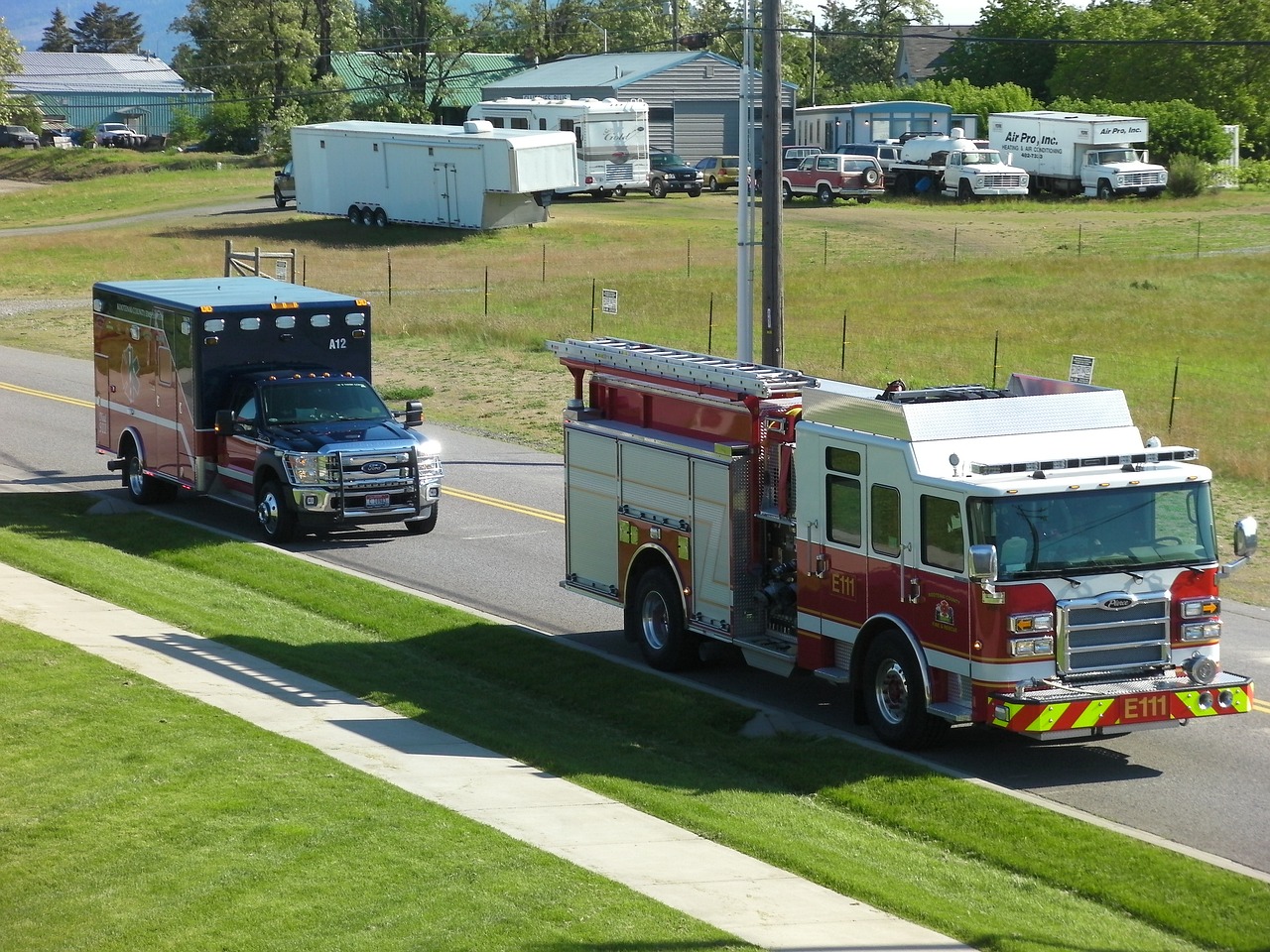
Understanding Your Condition
This article provides essential strategies for individuals with long-term illnesses to effectively prepare for emergencies, ensuring their safety and well-being during unforeseen situations.
Gaining a comprehensive understanding of your long-term illness is crucial. It's like having a map before embarking on a journey; without it, you might find yourself lost in a storm. This knowledge helps you identify specific needs and potential challenges during emergencies, allowing for better preparedness and response. For instance, if you have a condition that affects your mobility, knowing how to navigate your environment safely during an emergency is essential. Understanding your condition also means recognizing the symptoms that may worsen in stressful situations.
Additionally, it's important to familiarize yourself with the medications you take. Each medication may have specific requirements, such as storage conditions and potential side effects. You should keep a detailed list of your medications, including dosages and any allergies you might have. This list can be invaluable during emergencies when you need to communicate quickly with healthcare providers.
| Medication | Dosage | Allergies |
|---|---|---|
| Medication A | 100 mg | None |
| Medication B | 50 mg | Penicillin |
| Medication C | 200 mg | None |
Moreover, consider the emotional aspects of your condition. Long-term illnesses can often lead to anxiety, especially during emergencies. Understanding your mental health needs is just as important as managing your physical health. This might include having a plan for how to cope with stress or anxiety during a crisis. Reach out to mental health professionals if necessary, as they can provide strategies tailored to your unique situation.
In summary, understanding your condition is not merely about knowing the facts; it’s about being proactive. By educating yourself about your illness, you empower yourself to make informed decisions during emergencies. This knowledge can be your greatest ally, helping you navigate through the chaos with confidence and clarity.
Developing a detailed emergency plan tailored to your illness is vital. This plan should include essential contacts, medical information, and specific actions to take in various emergency scenarios.
Compile a list of emergency contacts, including healthcare providers and family members. Ensure these individuals are informed about your condition and can provide assistance when needed.
Choosing a healthcare proxy is essential for making medical decisions on your behalf during emergencies. This person should be well-informed about your preferences and health status.
Effective communication during emergencies is critical. Establish clear communication plans with your contacts, ensuring everyone knows how to reach each other and share vital information.
Assembling a kit of essential supplies is crucial for emergency preparedness. This kit should include medications, medical equipment, and personal items necessary for your health and comfort.
Being aware of local resources, such as shelters and healthcare facilities, can significantly enhance your emergency preparedness. Research these resources in advance to ensure quick access during a crisis.
Engaging with community support services can provide additional assistance during emergencies. These services may offer transportation, medical help, and shelter options tailored to individuals with long-term illnesses.
Connecting with support networks can provide valuable resources and emotional support. These networks often share experiences and strategies for managing emergencies related to long-term illnesses.
Regularly practicing emergency drills can enhance your preparedness. Familiarizing yourself with your emergency plan and supplies ensures you know how to respond effectively in real situations.
- What should I include in my emergency kit? Your emergency kit should include medications, medical equipment, a first-aid kit, personal hygiene items, and comfort items like a blanket or favorite book.
- How can I communicate my needs during an emergency? Establish clear communication plans with family and friends, and consider carrying a medical alert card that details your condition and needs.
- What resources are available for individuals with long-term illnesses? Local hospitals, community centers, and non-profit organizations often provide resources tailored for individuals with long-term illnesses.
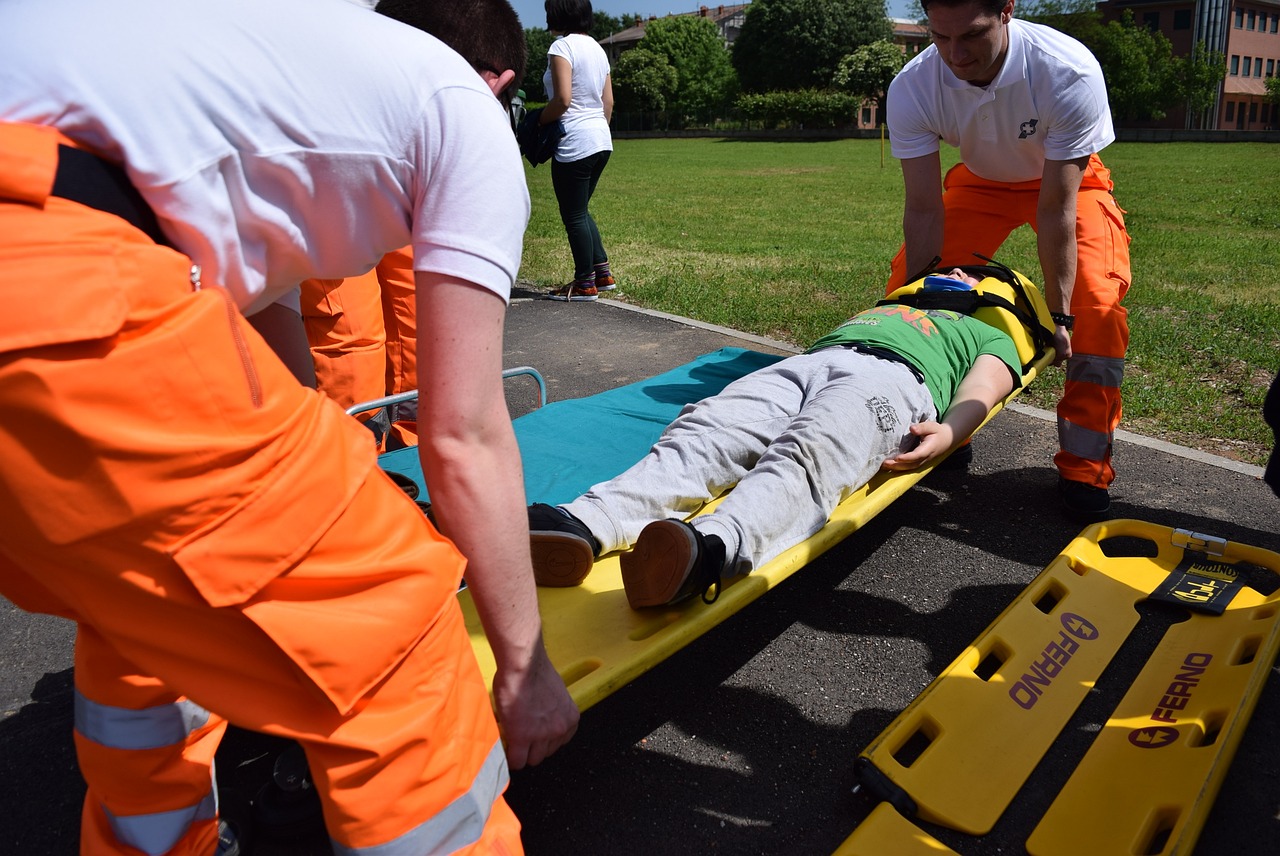
Creating an Emergency Plan
When it comes to preparing for emergencies, especially for those with long-term illnesses, having a well-thought-out emergency plan is not just a good idea—it's essential. Think of your emergency plan as a roadmap that guides you through the chaos of an unexpected situation. Without this roadmap, you might find yourself lost, confused, and overwhelmed. So, let's dive into the nitty-gritty of crafting this vital plan!
Your emergency plan should be tailored specifically to your needs, taking into account your medical condition, daily routines, and the support systems you have in place. Start by identifying the types of emergencies you might face. This could range from natural disasters like hurricanes and floods to personal emergencies such as sudden health crises. By understanding the potential scenarios, you can create a more effective plan.
One of the first steps in developing your emergency plan is to compile a list of essential contacts. This list should include:
- Your primary healthcare provider
- Specialists related to your condition
- Family members or friends who can assist
- Local emergency services
Make sure these individuals are not only aware of your condition but also know how to assist you during an emergency. It's like assembling your own personal support team—everyone plays a crucial role.
Another critical component of your emergency plan is designating a healthcare proxy. This is someone who can make medical decisions on your behalf if you are unable to do so. Choose someone who understands your medical history, treatment preferences, and overall health goals. Having this person in place is like having a trusted co-pilot who knows how to navigate your health journey, especially when turbulence hits.
Establishing clear communication plans is also vital. In the chaos of an emergency, you want to ensure that everyone knows how to reach you and vice versa. Consider setting up a group chat or a dedicated communication channel with your emergency contacts. This way, you can share critical updates quickly and efficiently. Think of it as having a lifeline that connects you to your support network, no matter the circumstances.
Finally, don’t forget to gather essential supplies that you may need during an emergency. Create a checklist of necessary medications, medical equipment, and personal items that you can't live without. Having these items ready and easily accessible is like having a safety net that cushions you in times of crisis. You can even organize these supplies in a designated emergency kit, ensuring that everything is in one place and easy to grab when the time comes.
By taking the time to create a comprehensive emergency plan, you are not just preparing for the worst; you are empowering yourself to handle whatever life throws your way. Remember, preparation is not about living in fear—it's about living with confidence, knowing that you are ready for anything. So, gather your resources, communicate with your support team, and take proactive steps to ensure your safety and well-being during emergencies.
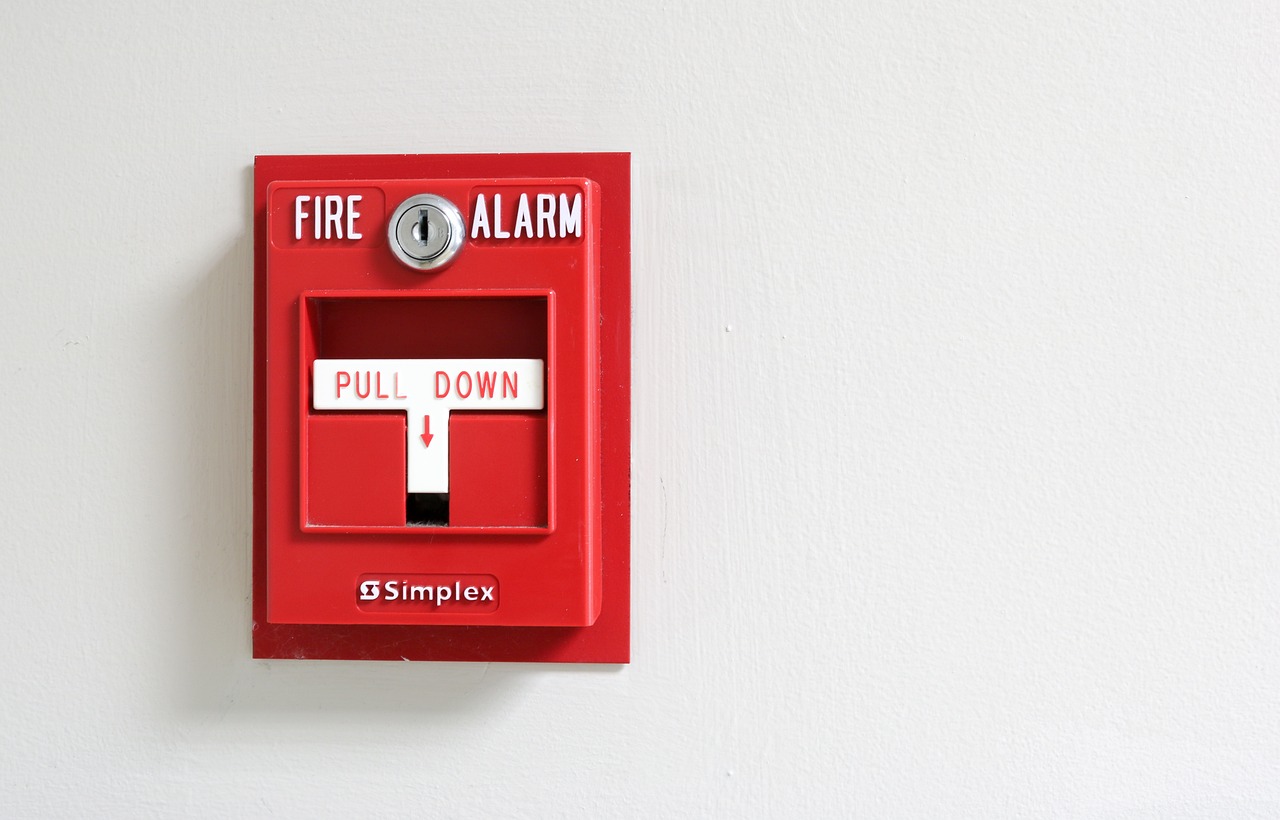
Identifying Emergency Contacts
When it comes to preparing for emergencies, one of the most crucial steps is identifying your emergency contacts. These are the people who will be your lifeline during a crisis, and having a well-thought-out list can make all the difference. Start by compiling a list of individuals who are not only reliable but also familiar with your long-term illness and its specific needs. This list should include:
- Healthcare Providers: Your primary doctor, specialists, and any therapists who play a pivotal role in your care.
- Family Members: Close relatives who can provide emotional support and assistance in an emergency.
- Friends: Trusted friends who can help with logistical needs, such as transportation or keeping you company.
- Neighbors: Those who live nearby and can check in on you if help is needed.
It's essential that these individuals are not only on your list but also informed about your condition. This means having open conversations about your health, medications, and any specific actions they might need to take in case of an emergency. For example, if you have a severe allergy, make sure your contacts know how to use an EpiPen or when to call for help.
In addition to personal contacts, consider keeping a copy of your emergency contact list in multiple locations—like your wallet, your home, and even with a trusted neighbor. This way, if you ever find yourself in a situation where you can't communicate, the information is readily available to someone who can help you. You might also want to create a digital version that can be easily shared via text or email, ensuring that your contacts are just a click away.
Having a designated point person can also streamline communication. This person can be responsible for notifying others about your situation, which can help reduce confusion and ensure that everyone is on the same page. In a chaotic emergency, having a single person to relay information can be invaluable.
Finally, remember that your emergency contact list is not set in stone. Regularly review and update it to reflect any changes in your health, relationships, or living situation. Just as your health needs may change, so too will the people you rely on for support. Keeping your emergency contacts current is a simple yet effective way to enhance your preparedness.
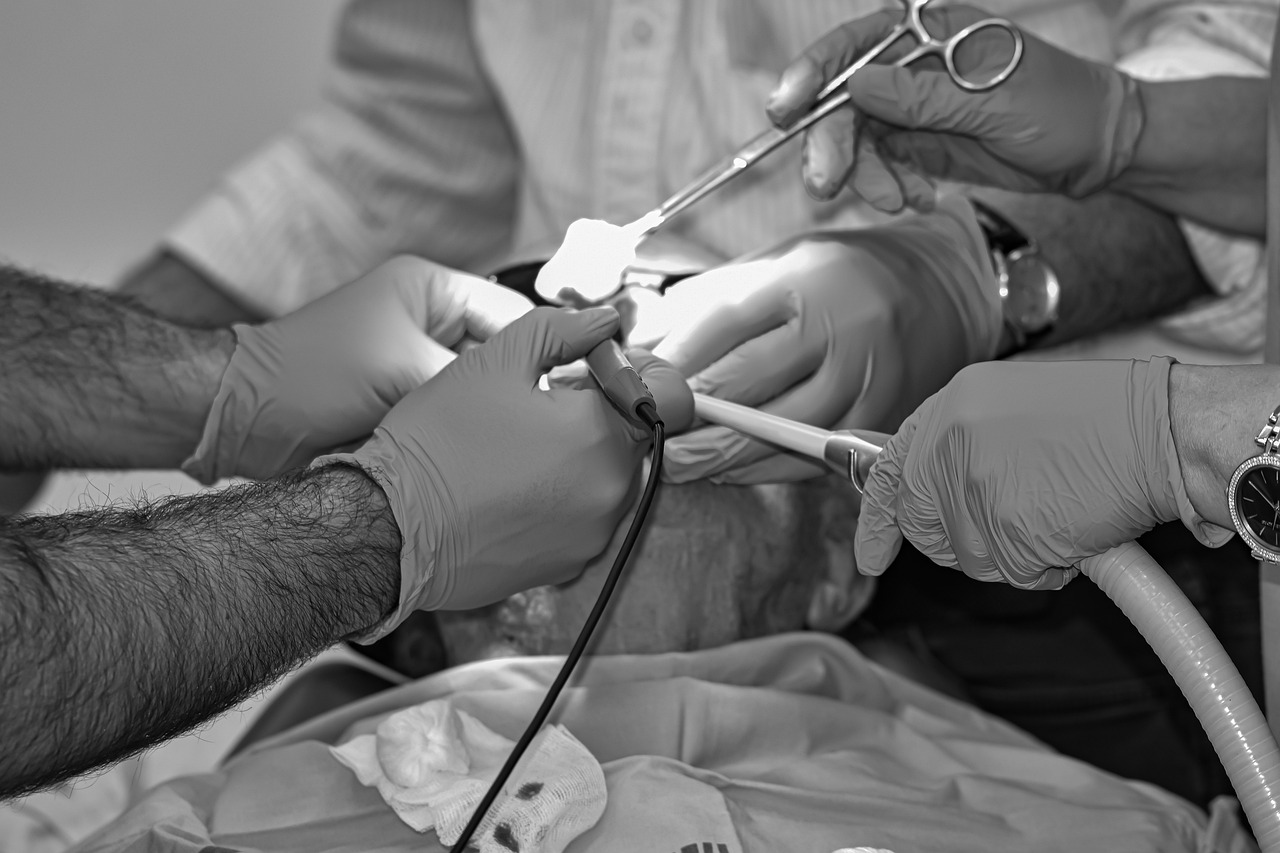
Designating a Healthcare Proxy
Choosing a healthcare proxy is one of the most significant decisions you can make when preparing for emergencies, especially if you have a long-term illness. This individual will be your advocate, making medical decisions on your behalf if you are unable to do so. It's like having a trusted friend who knows your every wish regarding your health care, ready to step in when you need them the most. But how do you go about selecting the right person for this critical role?
First and foremost, it's essential to select someone who understands your medical condition and is familiar with your values and preferences. This person should be someone you trust implicitly, as they will be making decisions that could impact your life significantly. Think of it as choosing a captain for your ship during a storm; you want someone who can navigate the rough waters while keeping your best interests at heart.
When designating a healthcare proxy, consider discussing your wishes and preferences with them in detail. This conversation should cover various scenarios, including treatment options you would or wouldn't want, end-of-life care, and any other medical decisions that might arise. It’s crucial that your proxy feels comfortable and confident in representing your wishes, as this will reduce stress and confusion during a crisis.
To ensure clarity and avoid any misunderstandings, you might want to document your healthcare proxy designation. This can be done by filling out a healthcare proxy form, which is often available through healthcare providers or legal resources. Once completed, make sure to share copies with your proxy, your healthcare provider, and any family members who should be aware of your decision. This way, everyone is on the same page, and your wishes are respected.
Lastly, remember that designating a healthcare proxy is not a one-time task; it’s essential to revisit this decision periodically. Life circumstances change, and so may your preferences or the suitability of your chosen proxy. Regular check-ins ensure that your healthcare proxy remains aligned with your current needs and desires.
- What is a healthcare proxy? A healthcare proxy is a person you designate to make medical decisions on your behalf if you are unable to do so.
- Do I need a lawyer to create a healthcare proxy? While it's not always necessary to involve a lawyer, having one can help ensure that your documents are legally sound and reflect your wishes accurately.
- Can I change my healthcare proxy? Yes, you can change your healthcare proxy at any time. Just make sure to inform your new proxy and update any legal documents accordingly.
- What if my healthcare proxy is unavailable during an emergency? It's wise to designate an alternate proxy in case your primary choice is unavailable. This provides additional assurance that someone will be able to advocate for you.

Establishing Communication Plans
When it comes to emergencies, having a solid communication plan can mean the difference between chaos and calm. Think of your communication plan as the lifeline that connects you to your support network when the unexpected strikes. It’s essential to ensure that everyone involved—family members, friends, and healthcare providers—knows how to reach each other and what to do in case of an emergency.
Start by creating a communication tree. This is a visual representation of who needs to be contacted in various situations. For example, if you have a medical emergency, your first point of contact may be a family member who lives nearby. From there, that family member can notify others, including your healthcare provider. By establishing this hierarchy, you streamline the communication process, making it easier for everyone to know their role.
Moreover, consider utilizing various communication methods. While a phone call might be the quickest way to reach someone, it’s not always reliable during emergencies—especially if phone lines are down. Therefore, ensure that your plan includes:
- Text messaging: Texts can often get through when calls cannot, so encourage your contacts to check in via SMS.
- Email: In less urgent situations, email can serve as a reliable way to update family and friends.
- Social media: Platforms like Facebook or Twitter can be useful for broadcasting your status to a wider audience quickly.
It's also a good idea to have a designated meeting point. This is especially important if you live in an area prone to natural disasters. Choose a location that is easily accessible and known to everyone in your support network. This way, if communication fails, you’ll have a physical space where everyone can regroup and share information.
Regularly reviewing and practicing your communication plan is vital. Just like any other part of your emergency preparation, repetition reinforces knowledge. Schedule periodic check-ins with your contacts to ensure everyone remembers the plan and feels comfortable executing it. This not only builds confidence but also strengthens your relationships, as you’re all working together to ensure safety and well-being.
Lastly, don’t forget to include your healthcare provider in your communication plan. Share your emergency contacts with them and ensure they have a copy of your medical information. This way, if you’re unable to communicate due to your condition, they can still provide the necessary care based on your medical history.
In summary, establishing a comprehensive communication plan is a proactive step that can significantly enhance your safety during emergencies. By keeping your network informed, utilizing multiple communication methods, and practicing regularly, you can face unforeseen situations with greater confidence and peace of mind.
Q: What should I include in my emergency communication plan?
A: Your emergency communication plan should include a list of emergency contacts, methods of communication (like texting, calling, and social media), a designated meeting point, and your healthcare provider's contact information.
Q: How often should I review my communication plan?
A: It's advisable to review your communication plan at least every six months or after any significant life changes, such as moving or changes in your health status.
Q: What if my contacts don’t live nearby?
A: Choose a reliable contact who lives in a different area, as they may be able to communicate with others on your behalf if local lines are down. This person can serve as a central point of contact for your support network.

Gathering Essential Supplies
When it comes to preparing for emergencies, especially for those living with a long-term illness, gathering essential supplies is not just a task; it’s a lifeline. Imagine being caught in a situation where you need your medications, but they’re nowhere to be found. It’s a scenario no one wants to face, but with the right preparation, you can ensure that you have everything you need at your fingertips. Start by creating a comprehensive kit that includes not only your medications but also any medical equipment you rely on daily. This could range from insulin pumps to nebulizers, depending on your specific health needs.
In addition to medications and equipment, consider including personal items that can provide comfort during stressful times. Think about your favorite blanket, a book, or any other small items that can help soothe your nerves. It’s essential to remember that emergencies can be chaotic, and having familiar items can make a world of difference in maintaining your mental well-being.
To make this process easier, you can categorize your supplies into several key areas:
- Medications: Ensure you have a sufficient supply of your prescriptions. It’s wise to keep an updated list of all your medications, including dosages and instructions.
- Medical Equipment: Include any necessary devices, such as blood pressure monitors or glucose meters. Don’t forget the batteries if they’re required!
- Personal Items: Pack items that bring you comfort, such as a journal, photos, or a favorite book.
- Emergency Documents: Keep a copy of your medical records, emergency contacts, and insurance information in your kit. This can be invaluable during a crisis.
As you gather these supplies, consider the unique aspects of your condition. For instance, if you have dietary restrictions, including non-perishable food items that meet those needs is crucial. Think about snacks that are easy to grab and don’t require preparation, ensuring you have the energy you need to deal with any situation.
Lastly, it’s important to regularly check and update your emergency kit. Medications can expire, and your needs may change over time. Set a reminder every few months to review your supplies, replacing any expired items and adding new essentials as necessary. This proactive approach not only ensures that you are prepared but also gives you peace of mind knowing that you’re ready to face whatever comes your way.
Q: How often should I check my emergency supplies?
A: It’s recommended to check your emergency kit every three to six months to ensure that medications are not expired and that all necessary items are included.
Q: What should I do if I have specific dietary needs?
A: Include non-perishable food items that cater to your dietary restrictions in your emergency kit. Consider shelf-stable options that are easy to prepare and consume.
Q: How can I ensure my emergency contacts are informed?
A: Share your emergency plan and contact list with your emergency contacts. Regularly update them about any changes to your health or medications.
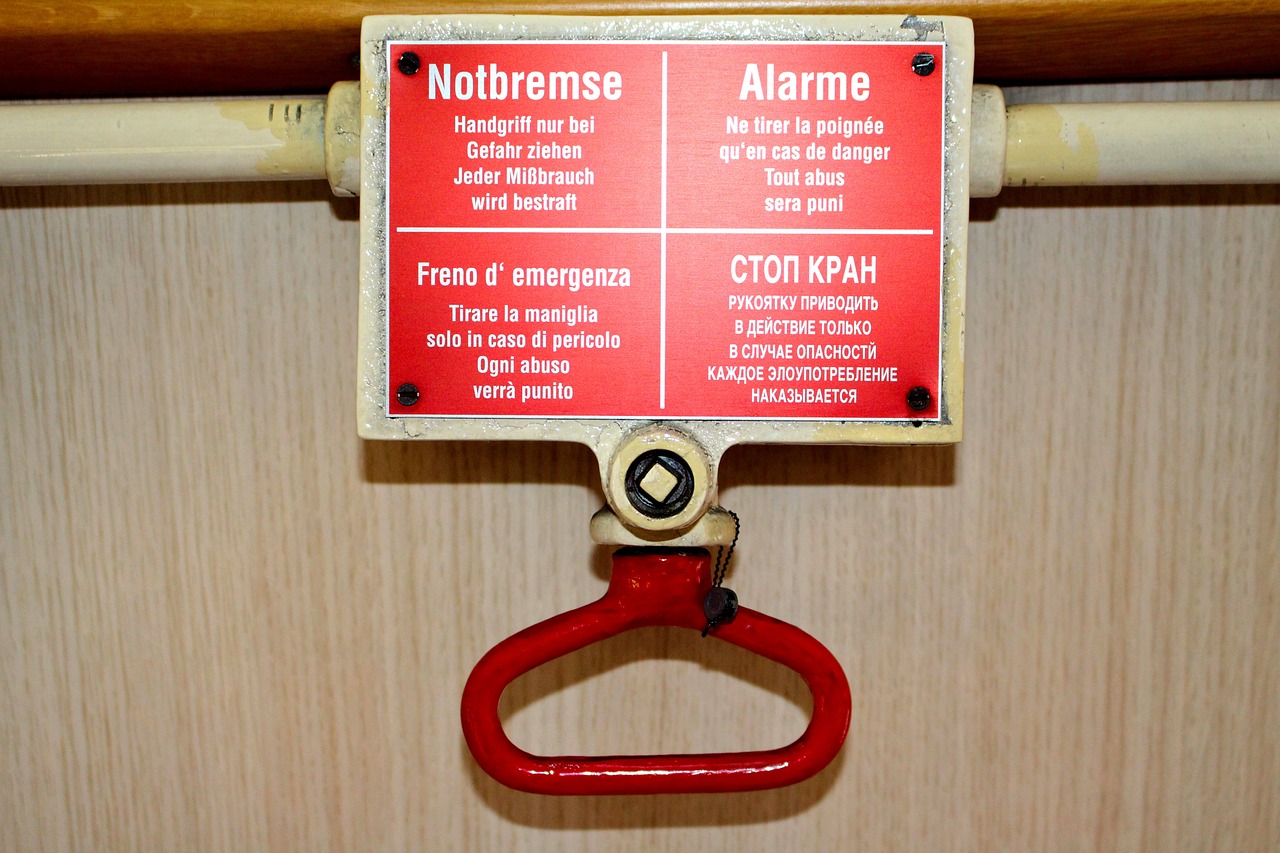
Staying Informed About Local Resources
When it comes to being prepared for emergencies, especially if you have a long-term illness, knowing your local resources is like having a secret weapon in your back pocket. It's not just about having a plan; it's about knowing where to turn when the unexpected happens. Imagine being in a situation where you need immediate assistance, but you're unsure of where to go or who to call. This is why staying informed about local resources can make a world of difference.
Start by researching local shelters, healthcare facilities, and emergency services that cater specifically to individuals with long-term illnesses. This knowledge empowers you to act quickly in a crisis. For instance, you might find that some local hospitals have specialized units for your condition, or that certain shelters are equipped to accommodate specific medical needs. Here’s a quick overview of what to look for:
| Resource Type | Examples | Contact Information |
|---|---|---|
| Healthcare Facilities | Hospitals, Clinics | (555) 123-4567 |
| Shelters | Emergency Shelters, Accessible Housing | (555) 987-6543 |
| Emergency Services | Ambulance, Fire Department | (555) 000-9111 |
Additionally, don’t underestimate the power of community resources. Local organizations often provide support tailored to those with long-term illnesses. These can include transportation services, meal delivery, and even emotional support groups. By engaging with these services, you not only enhance your safety net but also foster connections that can be incredibly beneficial during tough times. It’s like building a web of support that you can rely on when the going gets tough.
Remember, knowledge is power. Keeping updated on local resources means you won’t be left scrambling when emergencies strike. Make it a point to check in with local health departments or community centers regularly. They often have new information about resources that can aid you in times of need. And don’t hesitate to reach out to your healthcare provider; they can guide you toward resources that specifically address your health needs.
In conclusion, staying informed about local resources is not just a safety measure; it’s a lifeline. By knowing where to turn and who to contact, you can navigate emergencies with greater confidence and peace of mind. So, take the time to familiarize yourself with what’s available in your community—it’s an investment in your safety and well-being.
- What local resources should I prioritize? Focus on healthcare facilities, emergency services, and community support organizations that cater to your specific needs.
- How can I find updated information about local resources? Regularly check with local health departments, community centers, and your healthcare provider for the latest information.
- Are there any online resources available for finding local support? Yes, many organizations have websites that list available local resources; you can also check social media groups for community support.

Utilizing Community Support Services
When it comes to preparing for emergencies, especially for those with long-term illnesses, community support services can be a lifeline. These services are designed to provide assistance during challenging times, ensuring that you are not alone when the unexpected occurs. Think of them as your safety net, ready to catch you when you stumble. They can offer a variety of resources, from medical assistance to transportation, making it easier for you to navigate through emergencies.
One of the first steps in utilizing these services is to identify what is available in your local area. Many communities have organizations dedicated to helping individuals with long-term illnesses. This can include non-profits, local government programs, and even volunteer groups. By reaching out to these organizations, you can gather vital information about what services are offered and how they can assist you when needed. For instance, some services may provide:
- Transportation: Reliable transport to medical appointments or shelters during emergencies.
- Medical Assistance: Access to healthcare professionals who can provide care or advice.
- Emergency Shelters: Safe places to stay if you need to evacuate your home.
- Meal Services: Delivery of meals to ensure you have proper nutrition.
Moreover, engaging with community support services can also foster a sense of belonging. Many of these organizations offer social programs that connect you with others facing similar challenges. This can be incredibly beneficial, as sharing experiences and strategies can help alleviate the stress that comes with managing a long-term illness during an emergency. You might find that others have valuable insights or resources that you hadn’t considered before.
To make the most of these services, it’s essential to keep an updated list of local contacts and resources. You can create a simple table to organize this information, which can be helpful during a crisis. Here’s an example of how you might structure it:
| Service Type | Organization Name | Contact Information |
|---|---|---|
| Transportation | Local Transit Authority | (555) 123-4567 |
| Medical Assistance | Community Health Center | (555) 234-5678 |
| Emergency Shelter | Red Cross Shelter | (555) 345-6789 |
| Meal Delivery | Meals on Wheels | (555) 456-7890 |
In conclusion, utilizing community support services is not just about having resources at your disposal; it’s about building a network of support that can help you thrive even in the face of emergencies. By being proactive and reaching out to these organizations, you empower yourself to handle unexpected situations more effectively. Remember, you are not alone in this journey, and there are people and services ready to support you every step of the way.
Q: How do I find community support services in my area?
A: You can start by searching online for local non-profits, government programs, and community health organizations. Local libraries and community centers often have information as well.
Q: Are community support services free?
A: Many community support services are free or offered at a low cost, but it’s always best to check with the specific organization for details.
Q: Can I rely on community support services during an emergency?
A: Yes, community support services are designed to assist individuals during emergencies. It’s advisable to familiarize yourself with these resources before an emergency arises.

Joining Support Networks
Joining support networks can be a game-changer for individuals with long-term illnesses. Imagine having a group of people who truly understand your struggles, share similar experiences, and can offer valuable insights. These networks can provide not just emotional support, but also practical advice on navigating the complexities of daily life with a chronic condition. By connecting with others in similar situations, you can exchange tips on managing symptoms, dealing with healthcare providers, or even just finding someone who gets it when you're having a tough day.
Support networks can take many forms. They might be local community groups, online forums, or social media pages dedicated to specific illnesses. Each type offers unique benefits. For instance, local groups often provide face-to-face interactions that can foster deeper connections, while online forums allow you to reach out at any time, even in the middle of the night when you might feel most isolated. The key is to find a network that resonates with you.
In addition to emotional support, many of these networks offer access to resources that can be incredibly helpful. You might find information about local services, upcoming events, or even workshops that teach skills relevant to your condition. Some networks organize activities that promote physical health, such as yoga classes tailored for those with limited mobility, or nutrition workshops that focus on dietary needs specific to your illness.
Furthermore, being part of a support network can empower you to advocate for yourself. When you share your experiences and learn from others, you become more informed about your rights and the options available to you. This knowledge can be crucial during emergencies, as you’ll be better equipped to make decisions about your care and communicate your needs effectively.
To get started, consider reaching out to local hospitals, clinics, or community centers. They often have information about support groups in your area. Online, platforms like Facebook and Reddit host numerous groups dedicated to a wide range of conditions. Don't hesitate to join a few and see which ones feel like the right fit for you. Remember, you’re not alone in this journey, and connecting with others can make a world of difference.
- What are support networks? Support networks are groups of individuals who come together to share experiences, provide emotional support, and exchange valuable information related to specific challenges, such as living with a long-term illness.
- How can I find a support network? You can find support networks through local hospitals, clinics, community centers, or online platforms like Facebook, Reddit, and specialized health forums.
- Are support networks only for emotional support? No, while emotional support is a significant aspect, many networks also provide access to resources, workshops, and information that can help you manage your condition effectively.
- Can I join multiple support networks? Absolutely! Joining multiple networks can provide a wider range of perspectives and resources, helping you find the best support for your needs.

Practicing Emergency Drills
When it comes to ensuring your safety during an emergency, is one of the most effective strategies you can employ. Just like a fire drill at school, these rehearsals prepare you for the unexpected, helping to reduce panic and confusion when the real thing happens. Imagine being in a situation where every second counts; having practiced your response can make all the difference between chaos and calm.
First and foremost, it’s essential to familiarize yourself with your emergency plan. This means not just reading it but actively engaging with it. Gather your family or support network and go through the plan step by step. Discuss the various scenarios you might face, whether it's a natural disaster, a medical emergency, or any other crisis. By doing this, you create a shared understanding and ensure that everyone knows their role. This collective effort can significantly enhance your confidence and readiness.
Moreover, consider setting up a mock emergency drill. Choose a scenario and simulate it as realistically as possible. For instance, if your long-term illness requires specific medications, practice retrieving them under time constraints. You could even set a timer to mimic the pressure of a real emergency. This practice not only helps you become familiar with the logistics of your plan but also highlights any gaps that need addressing.
Another key aspect of practicing emergency drills is communication. In the heat of the moment, clear communication can be your lifeline. Establish who will be responsible for communicating with emergency services, family members, and healthcare providers. During your drills, practice how you will relay vital information, such as your medical condition and any specific needs you might have. You might want to consider using a communication card that lists important details, which can be easily shared with first responders.
Finally, don’t forget to review and update your emergency drills regularly. As your health condition or living situation changes, so too should your plans. Schedule these reviews at least twice a year, and make it a family affair. This not only reinforces the importance of preparedness but also keeps everyone engaged and informed.
In summary, practicing emergency drills is not just about going through the motions; it’s about building a solid foundation of knowledge, confidence, and teamwork. So, gather your loved ones, run through your plans, and make sure everyone is on the same page. After all, when an emergency strikes, being prepared can turn a potentially overwhelming situation into a manageable one.
- How often should I practice emergency drills? It's recommended to practice at least twice a year, but more frequent drills can help keep everyone prepared.
- What should I include in my emergency plan? Your plan should include emergency contacts, medical information, specific actions for various scenarios, and communication strategies.
- Can I practice emergency drills alone? While practicing alone can be beneficial, involving family or support networks is crucial for effective preparation.
- What if my health condition changes? Regularly review and update your emergency plans to reflect any changes in your health or living situation.
Frequently Asked Questions
- What should I include in my emergency plan?
Your emergency plan should include essential contacts, medical information, specific actions to take in various scenarios, and a list of your medications and medical equipment. It's also helpful to have a designated healthcare proxy who understands your wishes.
- How can I identify the right emergency contacts?
Choose individuals who are familiar with your long-term illness and can assist you in an emergency. This may include family members, close friends, and healthcare providers. Make sure they know how to reach you and are aware of your specific needs.
- What essential supplies should I gather for my emergency kit?
Your emergency kit should contain all necessary medications, medical equipment, personal hygiene items, and comfort items like blankets or favorite books. Don't forget to include a list of your medical conditions and emergency contacts.
- How can I stay informed about local resources?
Research local shelters, healthcare facilities, and community support services ahead of time. You can often find this information online or by contacting local health departments and community organizations.
- Why is it important to practice emergency drills?
Practicing emergency drills helps you become familiar with your emergency plan and supplies, ensuring you know how to respond effectively in real situations. It can also reduce anxiety and build confidence in your preparedness.
- What role do support networks play in emergency preparedness?
Support networks provide valuable resources, emotional support, and shared experiences that can help you navigate emergencies related to your long-term illness. Connecting with others who understand your challenges can be incredibly beneficial.



















